
Ancient Siam: A Trip Through Thailand's Past
Ancient Siam
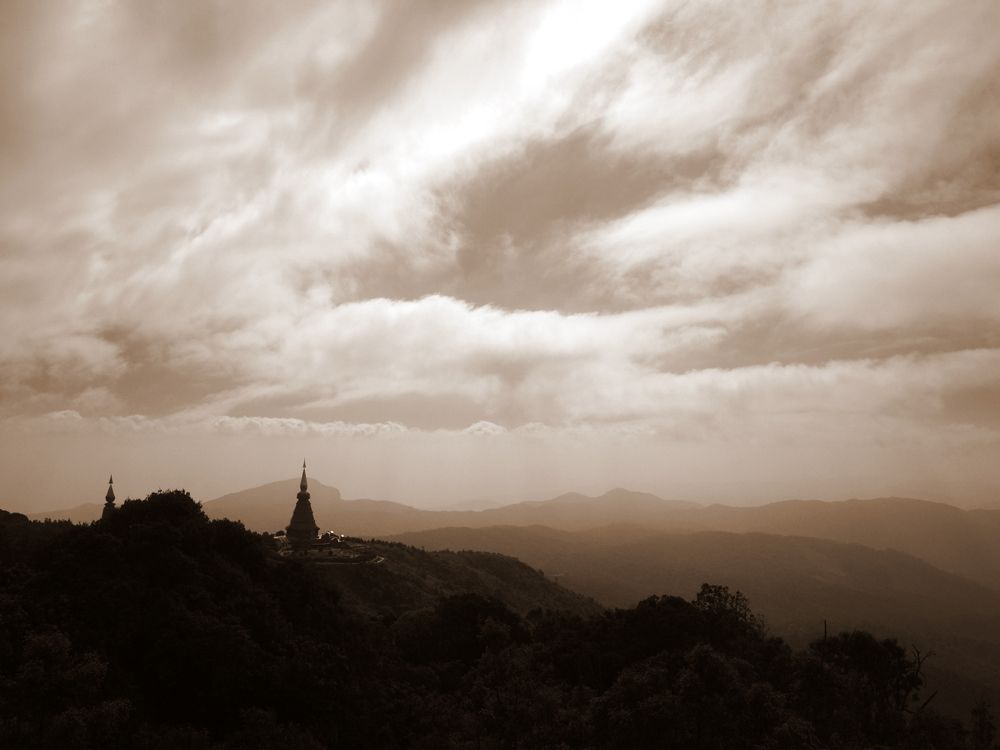
In the lowlands beneath me the rice fields bake in the hot sun. Sweat quickly beads on foreheads, and the air is lethargic and warm, tropical. From this high perch I have to bundle up my jacket though, shivering in cold winds at eye level with the clouds. I'm at the summit of Doi Inthanon, which at 8,415 feet (2,565 meters) is the highest point in the kingdom of Siam, better known today as Thailand.
Encompassing over 198,120 square miles (513,129 square kilometers) Thailand is the world's fifth largest landmass and home to over 67 million people. It is a land that spans high rolling hills in the north to the glistening blue waters of the Andaman Sea in the south, then encompasses a long ithmus along the South China Sea to the edge of the great Mekong River on its eastern borders with Cambodia and Laos.
At the heart of this land, slow moving rivers flow over vast flood plains freckled with rice fields and small villages. It was here along the great Chao Praya River that the ancient kingdoms of Siam first rose to power through the ascension of a number of powerful kingdoms culminating in the ancient capital of Ayuthaya in the 14th century.
Under the Bodhi Tree
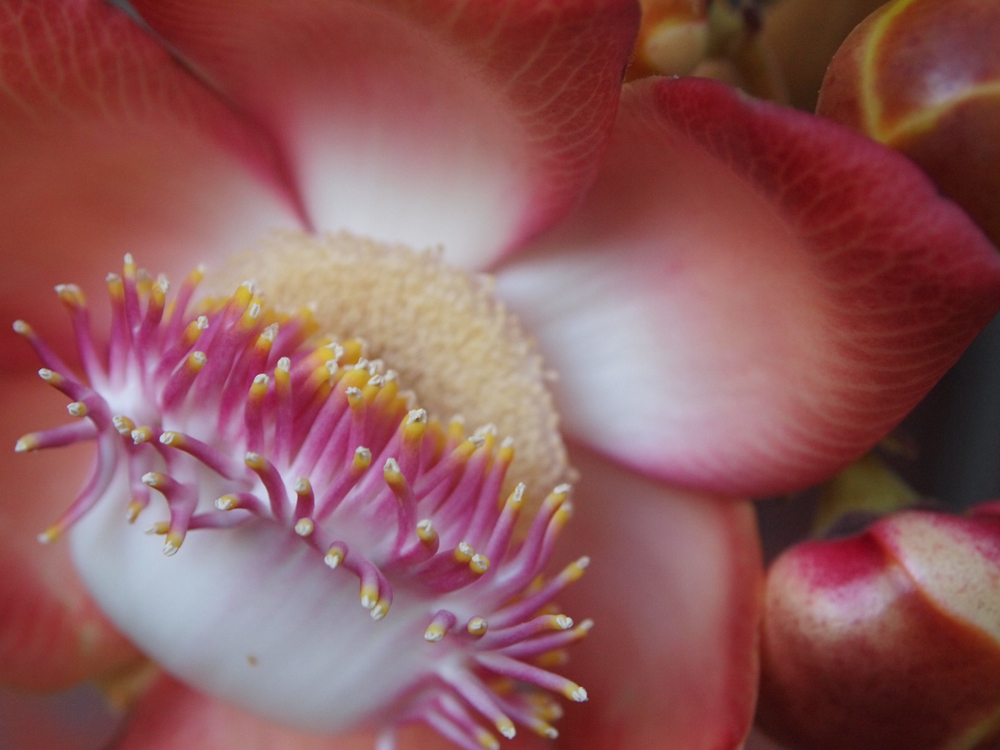
Under the veiny boughs and long outstretched branches of the bodhi tree, falling leaves drift down peacefully. Newly opened blooms in creamy pink reveal hidden intricacies inside, representing a sort of enlightenment perhaps.
It was under one of these timeless trees that Siddhartha, later known as the Buddha, found enlightenment in the sixth century B.C. in what is now India. By the third century B.C., Buddhism had spread widely across Asia. In Southeast Asia various interpretations of the Buddha's teachings led to the establishment of several sects, including Theravada Buddhism in ancient Siam.
Though long practiced as the dominant religion in the region, it was not until the establishment of the Thai Kingdom of Sukhothail in the13th century A.D. that Theravada Buddhism was made the offical state religion. It still retains that distinction in Thailand today.
Sea of Saffron
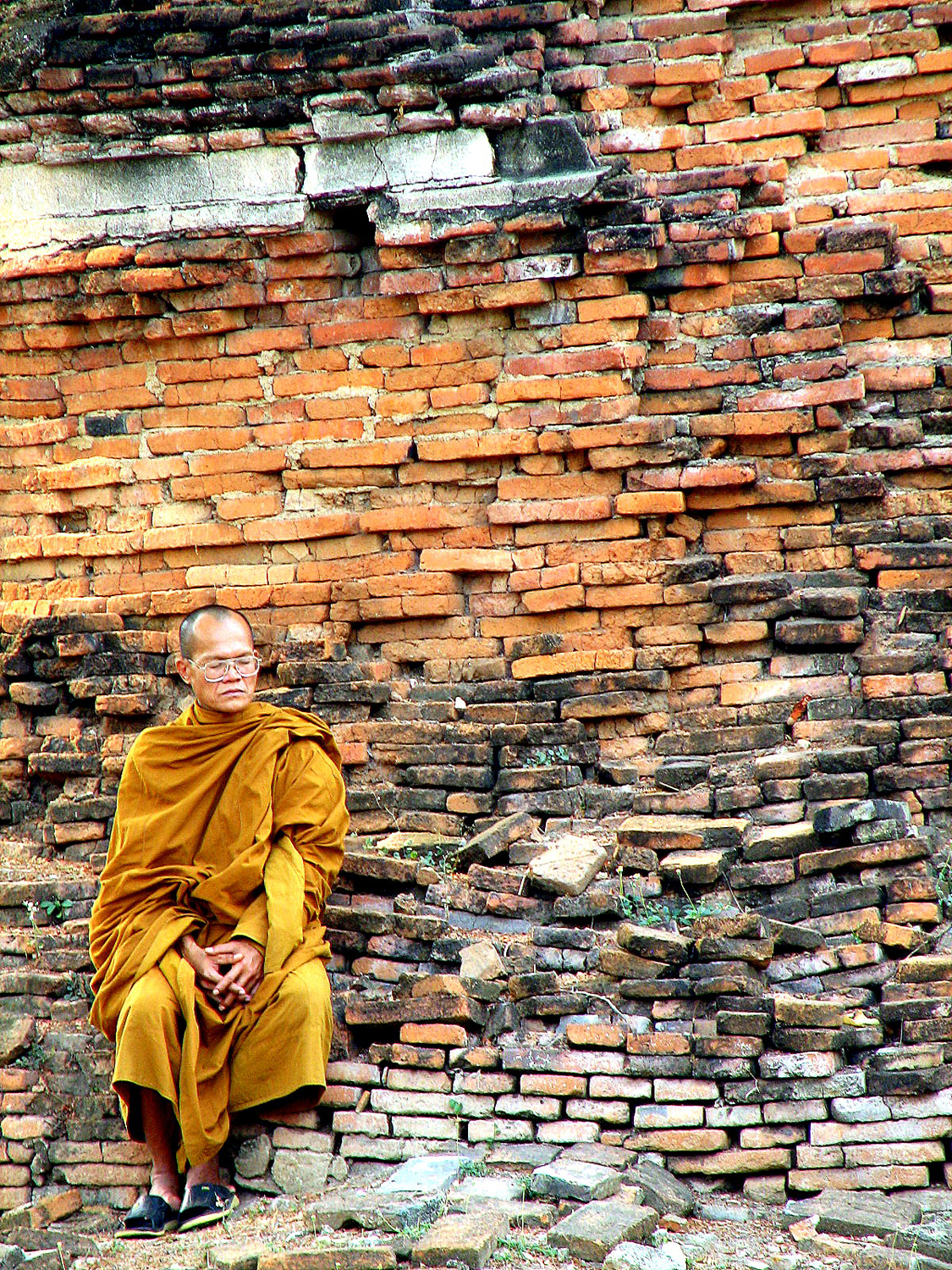
As still and silent as a stone, a monk blends in with the ancient bricks behind him, lost in meditation. Here among the ancient temple ruins, scenes like this hark back to centuries ago, conjuring up the past while reinforcing the important role of Buddhism in Thailand today.
Strong links between successional kings and the Theravada Buddhist institutions of ancient Siam served as the bedrock of everyday life. Betweeen the 13th and 19th centuries, the relationship between the king and the Buddhist community, or sangha, was mutually reinforcing.
Through this relationship the king represented the role of patron and protector of the religion and sangha community, while the sangha were in turn considered treasures of the kingdom and symbolic of the king's legitimacy. For centuries the reciprocal nature of this relationship offered checks and balances to the power of each, laying a stable foundation for the rise of Siam's most powerful kingdom, Ayuthaya.
Ayuthaya
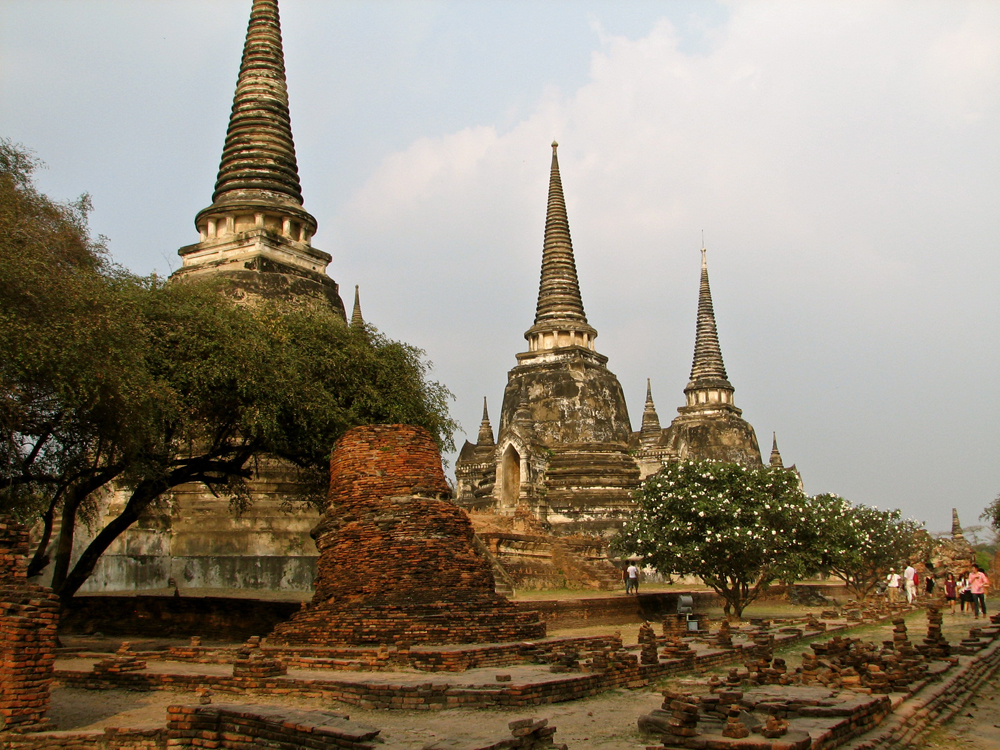
Walking through the ruins of the old city of Ayuthaya, the fragrance of frangipani flowers wafts on the breeze and birdsong takes the place of traffic in the modern city beyond. Amongst the countless wizened likenesses of the Buddha, regal spiralling stupas, and crumbling red brick walls, it is hard not to wonder what stories such walls could tell.
Functioning as a patchwork of self-governing tributary principalities under the allegiance of one king, Ayuthaya's basis of power was probably similar to feudal estates in Europe. Protected by and beholden to the royal family, local rulers with their own independent armies had a duty to assist the capital when wars or invasions broke out. This decentralized monarchy balanced power, encouraged agriculural production and reinforced trade, all which helped propel the kingdom to greatness.
Founded by King Ramathibodi I in 1350 on the banks of the Chao Praya River, the kingdom and capital city of Ayuthaya came to represent the golden age of wealth, art, culture and trade in ancient Siam. Today the ruins of the old city have been designated a UNESCO World Heritage Site.
Kingdom of Rice
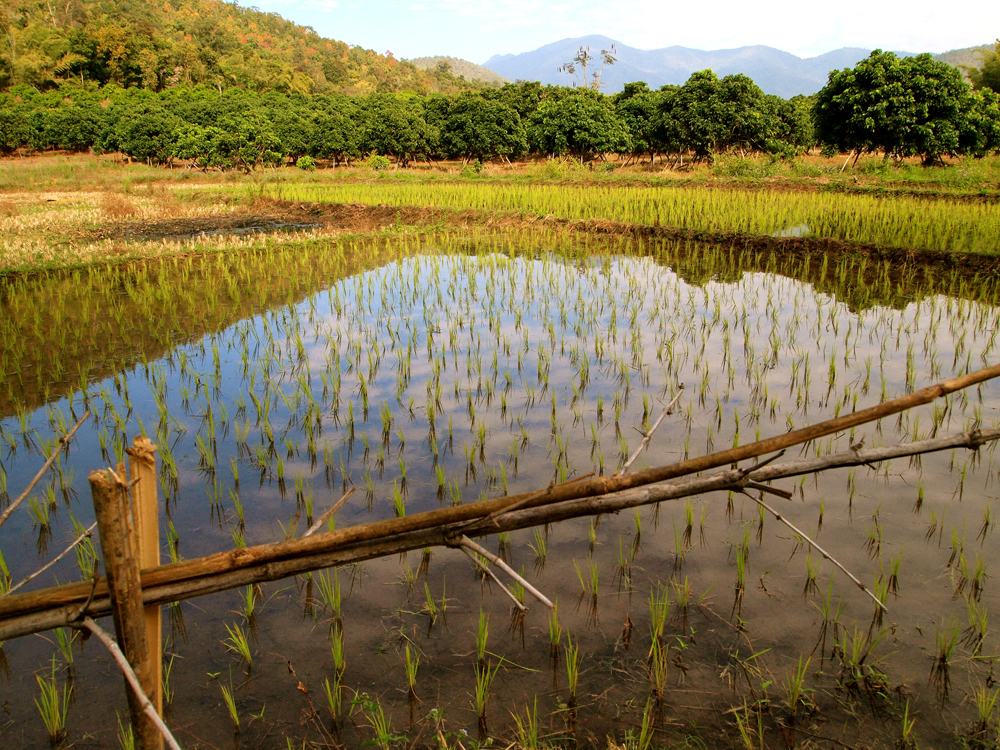
An old Chinese proverb says, "If you are planning for a year, sow rice; if you are planning for a decade, plant trees; if you are planning for a lifetime, educate people." Despite the truth in these words, sowing rice was a key ingredient in Ayuthaya's long-term success.
Between the 13th and 15th centuries a major innovation took place in Siamese rice cultivation. Focusing on diversity over reliance on one variety, farmers turned to a new variety of slender, non-glutinous rice from India. This so called "floating rice" was more robust to rising water levels and allowed growth to keep pace with the frequently flooded conditions of lowland fields.
So abundantly did this new variety grow that surpluses were produced and sold abroad for other goods. Soon Ayuthaya's capital, situated on the floodplains near the sea, became a rich economic hub for trade with China and Europe. Extensive canals were dug that brought rice from the king's fields to waiting ships, in the process reclaiming much of the Chao Praya River Delta for cultivation. To this day Thailand remains the largest exporter of rice in the world.
Planting the Seeds of Trade
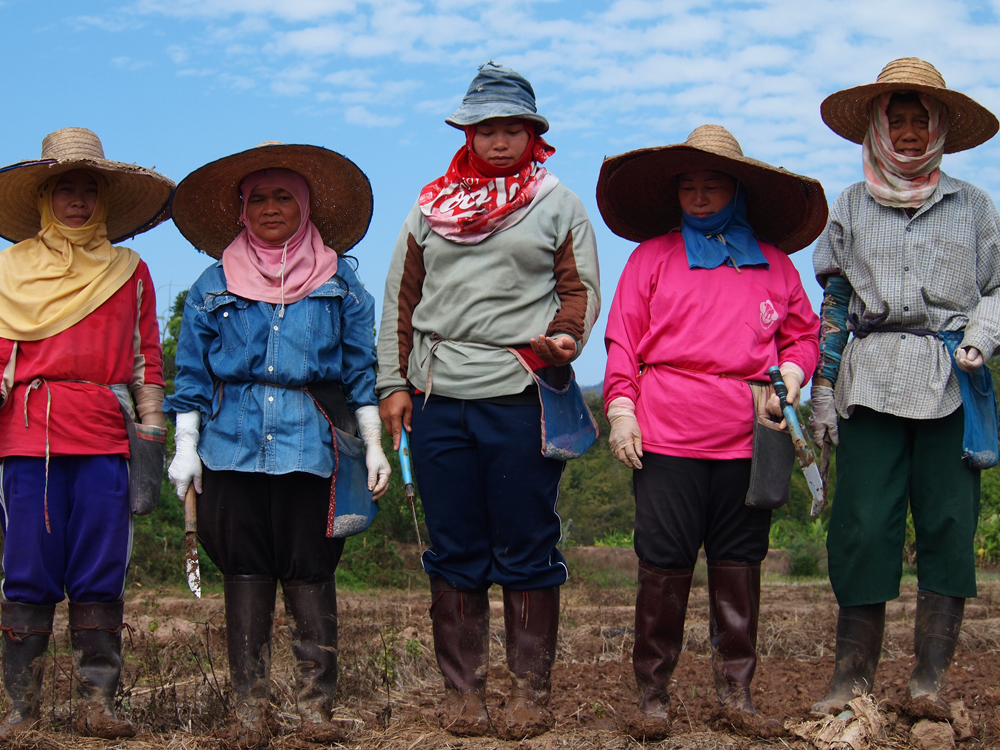
Seeing my curiosity, a group of village women sowing rice in the fields waves me over to observe their labor. They work purposefully and diligently, rythmically sowing rice seeds in long furrows. Before continuing on, they paused for this photo as if pondering the significance of their task: sowing in the present to reap in the future.
Ayuthaya's rapid economic development and rise to power was sown by villagers such as these and coincided with a global era of exploration and discovery. Between the 15th and 17th century the Chinese, Dutch, English and French all called to port at Ayuthaya, bartering luxery goods and weapons in exchange for rice. So prosperous did the city become from this trade that by 1600 its population is estimated to have reached over one million people, making its capital one of the largest cities in the world at that time. [Top 10 Ancient Capitals]
Welcoming foreign commerce and trade, Ayuthaya grew, but managed to remain independent by cleverly playing off the tensions and rivalry of French Indochina and the British Empire. To this day Thailand remains the longest standing monarchy in the world and the only Southeast Asian nation never to be colonized.
A Golden Age
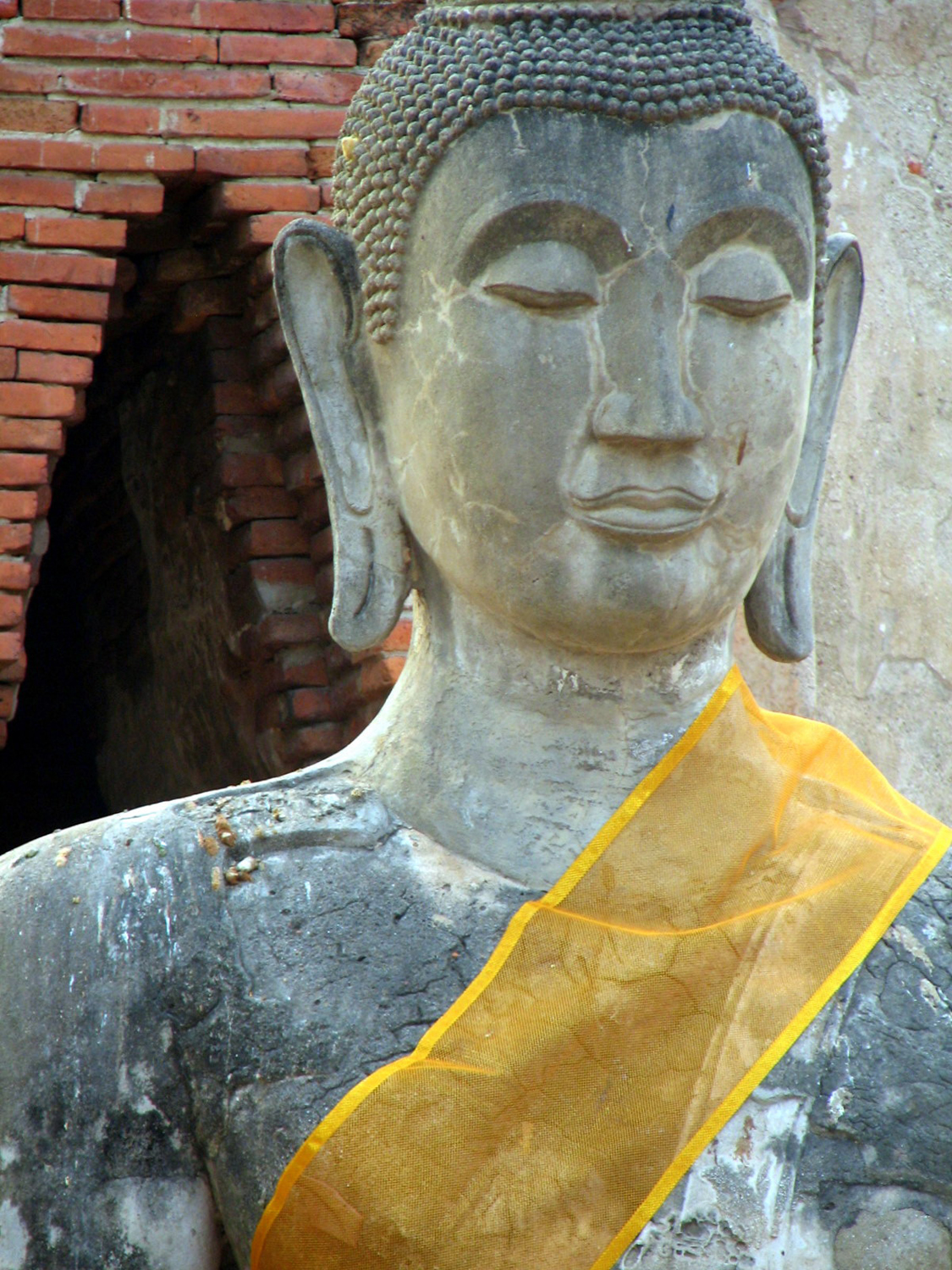
The timeless and serene visage of countless statues of the Buddha radiate reverence and calm over the now silent ruins of Ayuthaya's capital. Though the city's days of glory have long since faded, a patient timelessness still remains, as if waiting for a return to past splendors.
As European powers vied for economic control and imperial ambitions with the kings of Siam between the 15th and 17th centuries, eastern culture met western influence. In addition to goods, European missionaries brought new medicines, printing presses, and also Christianity. This incursion into religion was a dangerous game. After gaining a sympathetic audience with the Siamese King Narai in 1664, the French aroused the wrath and suspision of nobles and Buddhist clergy that resulted in a bloody coup d'état and expulsion of most Europeans from the kingdom.
Following this bloody period of dynastic struggle, Ayuthaya entered into a peaceful golden age in the latter half of the 18th century in which art, literature and learning flourished. Throughout Thailand today the art style of the Ayuthaya period is best exemplified in ornate Buddhist imagery such as this iconic stuatuary. [Album: The Seven Ancient Wonders of the World]
Sign up for the Live Science daily newsletter now
Get the world’s most fascinating discoveries delivered straight to your inbox.
The Sacking of Ayuthaya
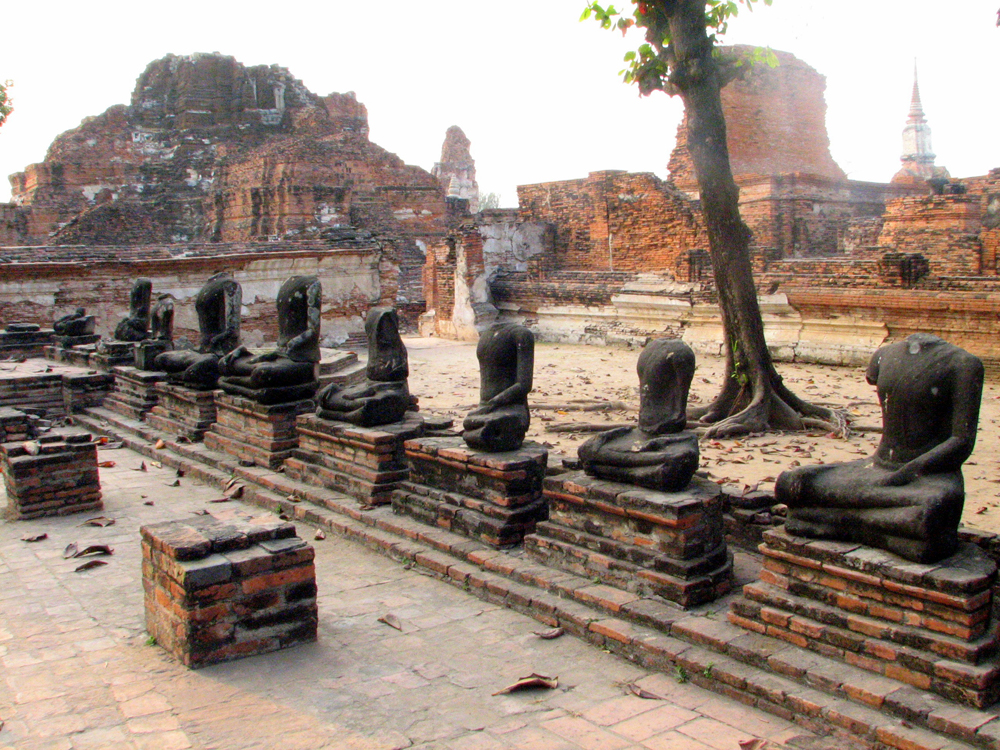
Rows of defaced Buddhist statues sit eerily amongst the ruins of Ayuthaya's old city like grave markers at the site of a massacre, their decapitated heads a powerful symbol of conquest and an unmistakable clue to Ayuthaya's demise.
Following a time of peace and flourishing of culture, disaster struck the kingdom in the last 50 years of its reign. Infighting among its own nobles helped weaken the kingdom as threats from rival kingdoms mounted. Then in 1765 the Burmese invaded with an army of over 40,000 from the north and west. After a 14-month seige, the capital city was razed to the ground, utterly destroying untold archives of art, literature and historic records. Only ruins now remain.
Rather ironically, if Ayuthaya had held out the siege a few months more, it is likely the kingdom would have never fallen. The Burmese were forced to withdraw soon after sacking Ayuthaya to confront threats to their own capital from Chinese forces. Such "what ifs?" in history are enough to make anyone wonder: What would Thailand, and the world be like today only if...?
As the Dust Settled
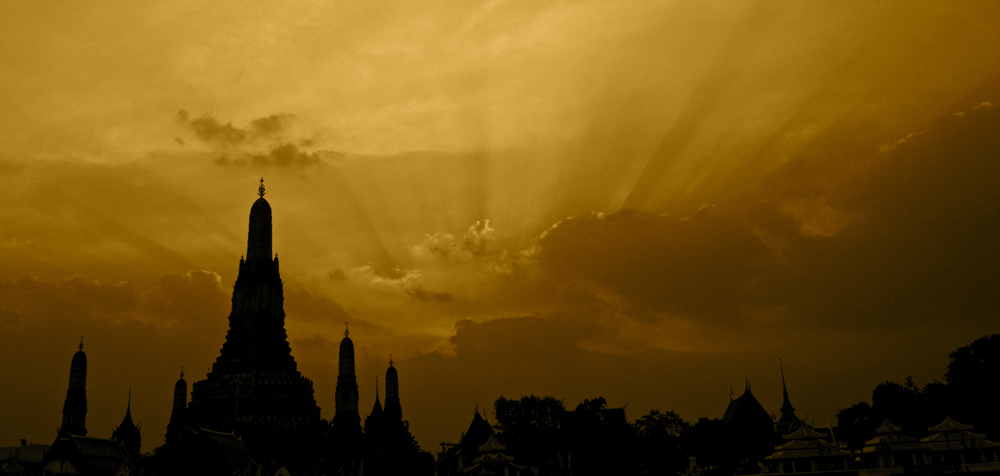
A favorite way to explore the current capital of Bangkok is by riding the frequent river boats that ply up and down the Chao Praya River for passengers. This morning as I watch dawn break over the silhouettes of towering medieval temples above the river, it is hard to believe I am in this throbbing mega-modern city. For all I know this could be hundreds of years ago.
After the Burmese withdrew from Ayuthaya in 1768, the country was reduced to chaos. Generals, noble families and rogue monks all vied against one another to fill the power vacuum left in the wake of the Burmese invasion. Eventually one general, Taak-Sin, rose above the rest to reunify the country and establish a new kingship. The new capital that his royal dynasty founded was called Bangkok.
Today Bangkok is a thriving metropolis and one of the most important commerical centers in Southeast Asia. Home to over 12 million people, Bangkok is the cultural, commercial and political heart of the country, with one foot firmly rooted in its cultural heritage and the other in the future.
Re-Imagining Ancient Siam
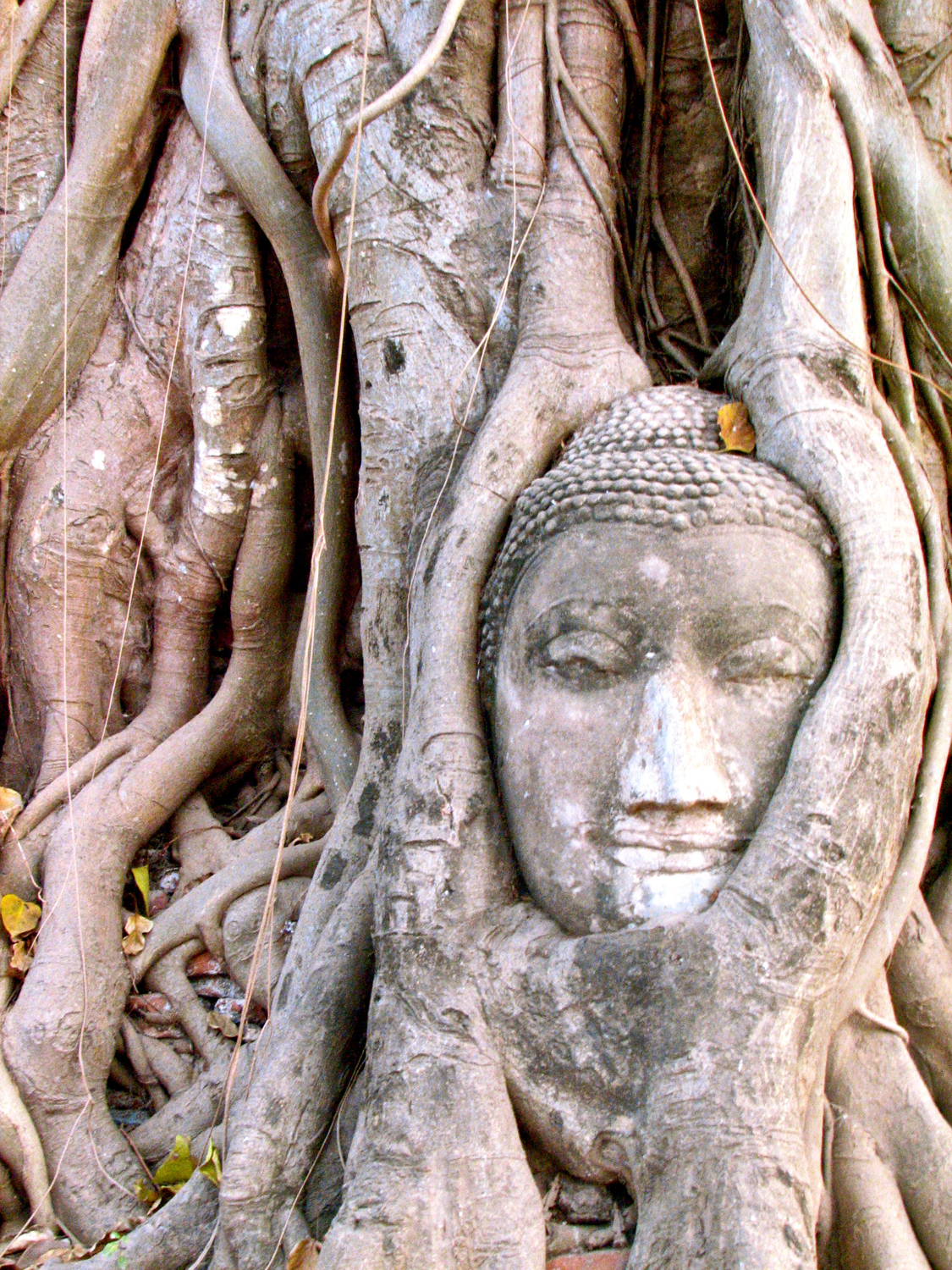
In the ruins of Ayuthaya today, wizened bodhi trees vie with tall temple stupas to touch the sky. Amongst the gnarled roots of one very famous tree a severed stone Buddha head gazes out from cradling roots that have grown around it. The image is astonishing both for its great sense of age and for the powerful symbolism it represents.
Symbolic of time and continuation, the roots of the bodhi tree wrap around the ruins of Ayuthaya, reclaiming the cities past. At the same time, the face gazing back serenely seems to echo a timeless truth and tenet of Buddhist philosophy: All things are temporary.
The story of Ayuthaya and of ancient Siam is also the story of modern day Thailand. To understand the country's present, it is important to know the past. Sometimes caught up in the struggles of our own existence, it can seem like there is nothing new under the sun, but history is full of epic stories, endless human struggles and timeless lessons that can inform our own existence. [Read more: The Riddle of Ancient Angkor]










